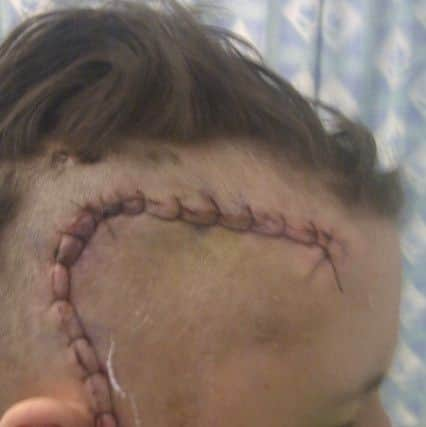Flying flag for epilepsy awareness


Two years ago next Sunday I had brain surgery, which took away the clusters of seizures I had suffered for 20 years.
During that time, I lived with epilepsy on my sleeve having about eight attacks a month by the time I went for the operation.
Advertisement
Hide AdAdvertisement
Hide AdI told people who needed to know about it and showed I wasn’t ashamed that it was part of me.


Perhaps I paid the price for that at job interviews and possibly in friendships, but in the most part I found that way of dealing with it made others more comfortable with it.
Now I am seizure free even after dropping two of my three medications and I’m looking to start driving lessons in a few weeks’ time.
I hope this can give some encouragement to the 32,000 people who are diagnosed with epilepsy every year. That’s 87 every single day.
Advertisement
Hide AdAdvertisement
Hide AdThere are more than 7,834 people in West Sussex with the condition and anyone can develop it, at any time in their life.
Despite this, epilepsy is a condition that is often overlooked and misunderstood.
In a recent survey by the Epilepsy Society, two per cent of people unbelievably still thought that epilepsy was caused by evil spirits. A seizure may look like something else has control over the human body, but it is simply a misfiring of electrical activity in the brain, not anything supernatural.
The part of the brain affected by that misfiring will determine how the seizure will look on the outside. It is in fact the brain having full control of the human body.
Advertisement
Hide AdAdvertisement
Hide AdOne of the biggest things charities and doctors are still trying to get across is basic first aid for epilepsy.
So here are the dos and don’ts of epilepsy first aid:
n Do cushion their head if possible
n Do reassure them in a gentle voice while the seizure is happening and while they come round
n Do keep an eye on the time. If the seizure lasts for more than five minutes, call the ambulance
n Don’t put anything in their mouth
n Don’t restrain their movements
n Don’t attempt to bring them round. The seizure should pass naturally within a few minutes.
Advertisement
Hide AdAdvertisement
Hide AdSome seizures just involve a loss of awareness with no falling or jerking of limbs most identified with epilepsy. In these cases you may need to steer the person away from danger and explain anything they may have missed.
In both cases, stay with the person until they have fully recovered and remember they may look like they’ve come round before they actually have.
For more information about epilepsy go to Epilepsy Action’s website www.epilepsy.org.uk or if you would like to fundraise for the charity call the regional fundraiser Lauren Wynn on 07867 497565 or at [email protected]
by West Sussex County Times reporter Anna Coe